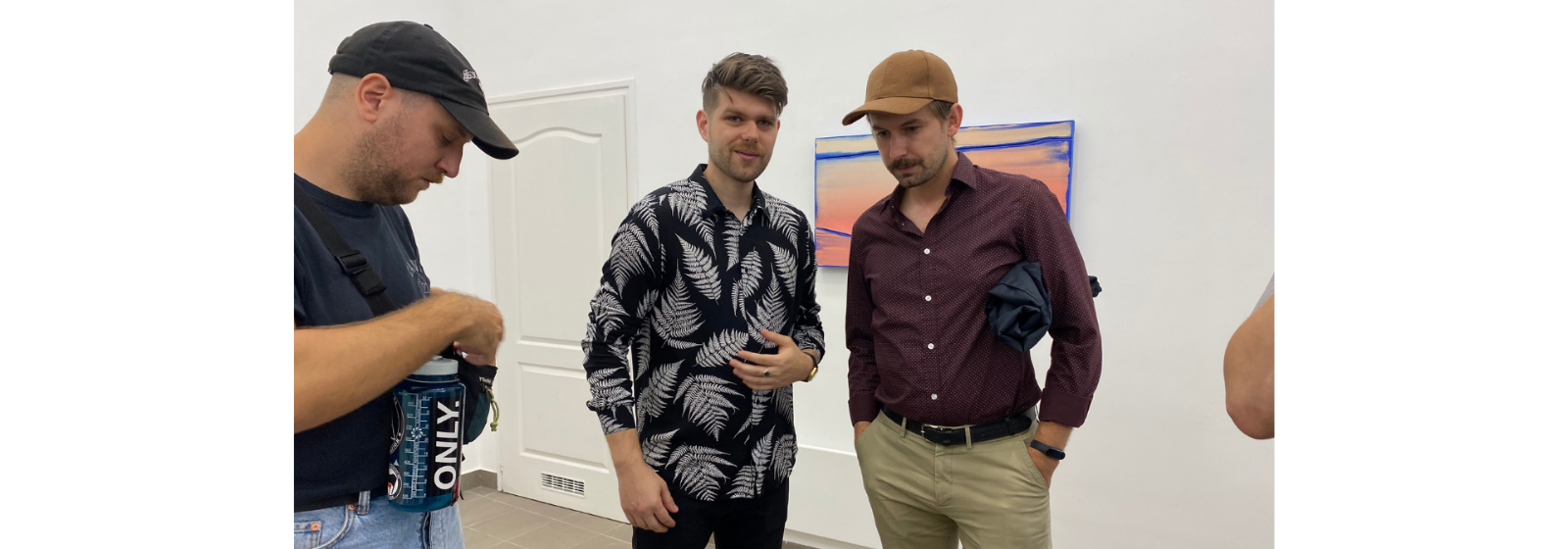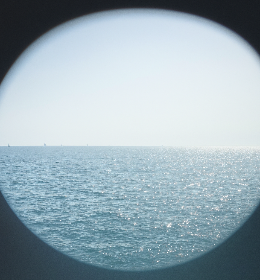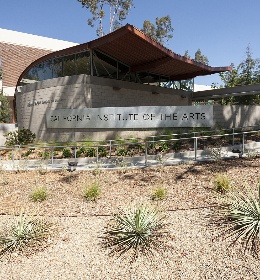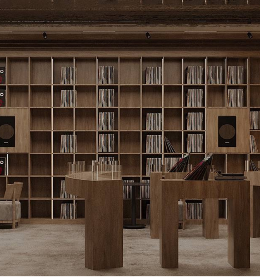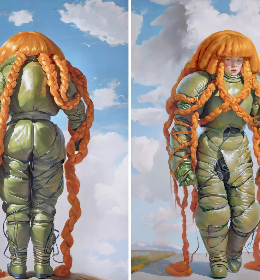I spoke to artist Balázs Csizik in person and via email about his sculptures and photography that are included in Geotaxis, a two-person show at Ani Molnár Gallery, which continues until October. His work is presented alongside paintings by artist Dániel Bernáth.

Synesthesia 16 by Balázs Csizik. Photo courtesy of the artist and Ani Molnár Gallery
I see a sensibility in Csizik’s work that I think would appeal to collectors in the art scene in Shanghai, where I lived for three years as an artist, teacher, and later arts writer. His photographic images of buildings recall and predict a futurism akin to films like Metropolis and is very much in the mode of Shanghai’s evolving architecture. In reviewing his work on his website to ask him deeper questions, I learn that he has previously exhibited his work at Shanghai Photo Fair in 2018. I also remembered seeing his work in an exhibition in the lovely little Hungarian town of Szentendre for the Art Capital Festival 2019 (Ferenczy Museum / Ámos Imre & Anna Margit Museum). His photographs of single buildings with a luminous area of seemingly reflected light, or numinous aura of fluorescent pink or ultramarine blue, create an instant association with historical works like those of Yves Klein and his famous Yves Klein blue. Csizik’s photos have an overall medium grey tone, warm and light-absorbent, as a lead plumb. The blue or pink fluorescence on the buildings’ façades echoes those singular moments one has on a late afternoon stroll, when the sunset is upon you and that special pink reflection bounces off of the glass on tall modern buildings.
Csizik explains his process with these words: “I started to experiment with different kinds of materials and realized that they have a different structure/ effect in different lights, in different parts of the day, or natural effects, like cloudy weather. These natural phenomena can give an effect to the images, can emerge the shining on the picture, or can fade humans away – can organize the basic emotional roots of the images. It’s the same when you see them as an object, or you can touch them, can feel the weight of them.”
For myself, I see his photographic images as created in a way that seems a conversion process – as if the reflection of the sun at morning or night, an intense fluorescence, paints itself upon a modern, cold architecture, humanizing it, possessing it, and transforming it into a work of art.
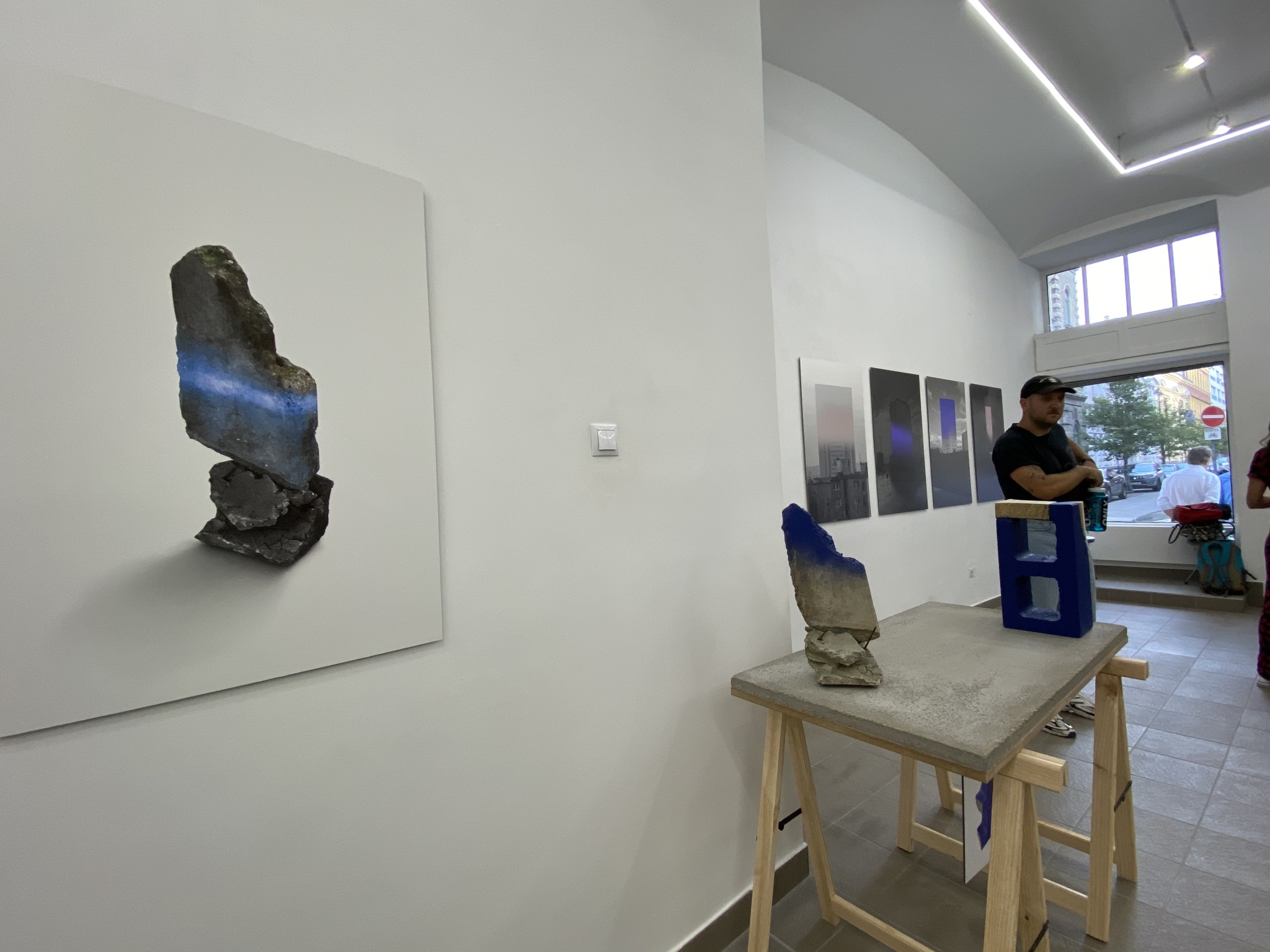
Geotaxis Exhibition, works from Synesthesia series by Balázs Csizik. Photo credit: Anne Murray

Geotaxis Exhibition, works from Synesthesia series by Balázs Csizik. Photo credit: Anne Murray
The sculptures seem somehow quite different to the images, as they recall a connection to rocks, to organic lived experiences, which are petrified; here concrete combines with wood or paint and imitates the organic. The addition of elements is as a prosthesis, blending and yet they do not belong; conforming, referring, mirroring, connecting in ways that seem impossible and yet, they comply. I wondered how he decided to make these connections between concrete blocks, scraps of wood and odd constructions of random elements. “I imagine them as a whole connected organism – first I realize the concept, the main visual guideline with colors and basic forms; after I collect items in the nature around me, mostly natural elements, like rocks and wood, mixed with found construction materials. The colors and the forms are the organizing elements to realize the series. The colors have a connection with the basic forms, some of which are organic, some are geometric – and also some are natural, some are man-made. These are all related in our life, too,” Csizik explains in depth. The works together form his Synesthesia series. Csizik expounds upon the concept behind the series, “Synesthesia now becomes synthesis. While the inherent quality of those synergies is the same, their modality is fundamentally different: synesthesia is the passive state of being found in unity, synthesis is the active, imaginative realization of unity. Synesthesia is form without forms; synthesis is reaching a form beyond forms – which is synesthesia again. The work of the synaesthetician is fulfilled.”
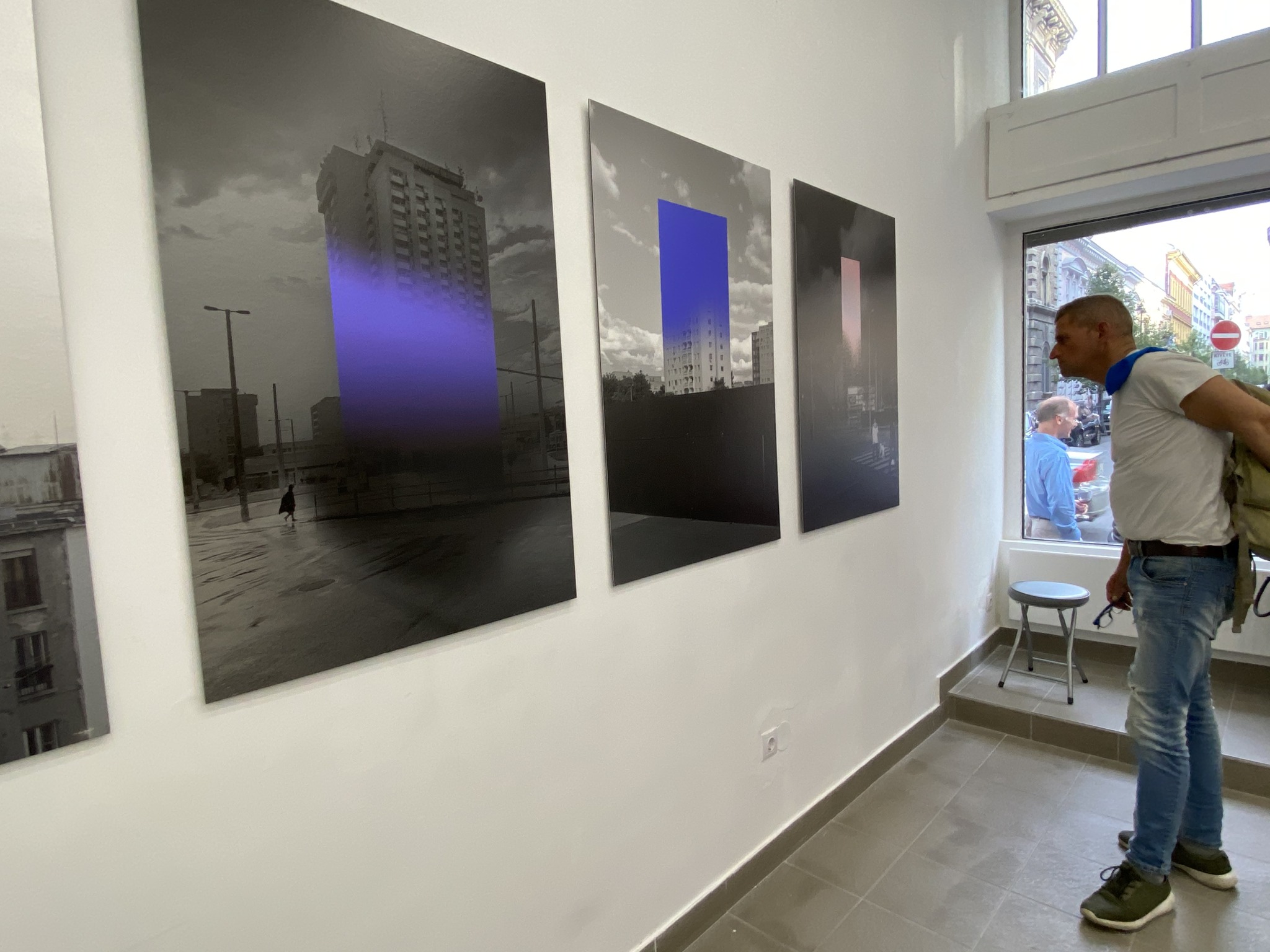
Geotaxis Exhibition, works from Synesthesia series by Balázs Csizik. Photo credit: Anne Murray
The exhibition curator Lili Boros explains further the context of the exhibition: “Human’s relationship to ‘nature’, to the ‘earth’, has its own history, a cultural tradition, especially in the visual arts from the beginning of history of humankind. Modernity effected big changes in this relationship. Even before, roots of this paradigmatic change can be found in the period of industrial revolution. Every artwork is a reference to another piece of art and cultural structure; they are intertexts, as we use this term in literary studies. Csizik and Bernáth are referring in a conscious way to these structures, to the tradition of visual systems. This context was important in my curatorial work: to emphasize the multi-layered references to the tradition of abstract art in the 20th Century and the relationship between nature and human, a topic which is permanently re-interpreted.”
Csizik inadvertently explains further this connection to art history and visual systems by citing the light which permeates and evolves in his work. “On my object-made artworks, both the found construction materials, stones, concrete and the belt (the matter and the spiritual link) transfigures: the piece of concrete is now a real, tangible object. It enters the gallery space; it permeates the imaginative space, from material reality upwards. And the linking chain is now a belt of light, dividing the concrete into a lower and an upper, a spiritual and a material reality. Light is the first form, and it takes back all forms to their origin. Light is true synesthesia in that meaning.” Like so many artists before him and stretching into the future, light is a pervasive, numinous source of inspiration, curiosity, and metaphor, a combining, connecting, and evolving phenomena both internally and externally.
The works are on display at Ani Molnár Gallery in Budapest until October 10th, 2020.
Anne Murray




